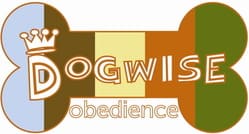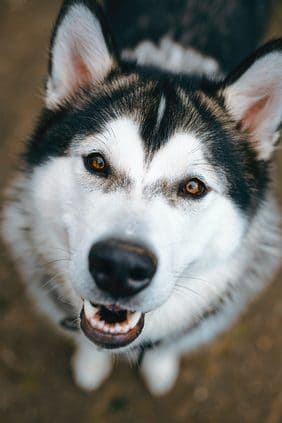Visual reactivity or leash aggression is a very common issue. The Look command can be very helpful in interrupting and fading this behavior.
You are walking down the street with your reactive dog on the leash. Another dog passes by and your dog attempts to lunge, barks or behaves inappropriately. Dogs become reactive for a multitude of reasons including leash frustration, lack of early socialization, a misunderstanding of normal dog to dog body language cues, fear, insecurity and so on.
Leash aggression can be made worse by well-intentioned owners who pull back on the leash or physically correct their dog for reacting. The key to working with leash reactivity or aggression is to keep it from playing out in the first place, while brining yourself into your dog’s equation. When your dog sees another dog, there is generally a 2-3 second delay before she reacts. Your dog’s eyes land on the distraction, she then visually targets it (that frozen stare) and then reacts.
By using the Look cue, you can condition your dog to visually check in with you before she can react, bypassing the outburst all together. Over time, your dog will forget that she used to have emotional baggage about passing dogs. The other dog simply becomes a cue to check in with my person.
Start by letting your dog see that you are holding a piece of food in front of your chest. Slowly move the hand with the treat 45 degrees off to the side. The dog will usually stare at your hand for a few seconds and then look to your face thinking, “What’s up? Why are you not giving me that piece of food?” The instant your dog makes eye contact with you, praise and feed the treat. If your dog only looks at you for a second, that is fine. The goal is to get her to turn away from the treat and to focus on you. She does not need to hold the gaze for long.
Once your dog is savvy to this little game after a few training sessions and quickly makes eye contact with you, add the word “Look” before you extend the hand with the treat. Practice the exercise for a few days with the added word “Look”. Then try just saying the word “Look” when your dog is looking away (holding treat off to the side gets faded out). Click and treat the eye contact.
Practice this exercise at different times throughout the day. As with all training, it is most effective to do a few repetitions at a time on a regular basis than to hold long sessions once or twice a week.
Once your dog understands “Look” begin giving the command on your walks when there is nothing to distract, building up to mild distractions. One example of a mild distraction would be a dog walking a few blocks away from you. As soon as your dog looks at the other dog, give her the “Look” command. The instant her eyes meet yours, praise and treat her for being the fabulous dog that she is. Interrupting your dog’s focus and providing this positive interaction can really be a game changer.

